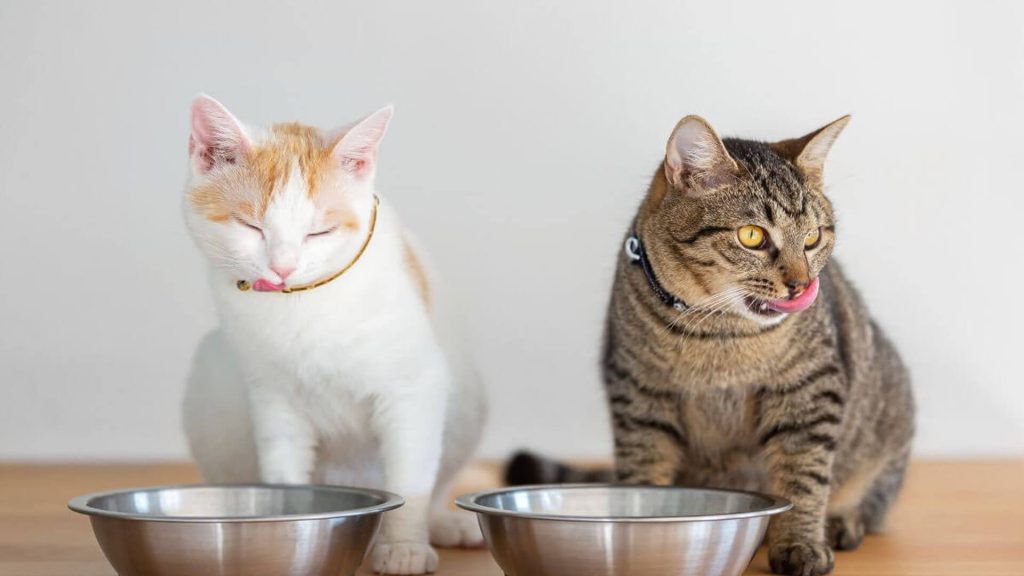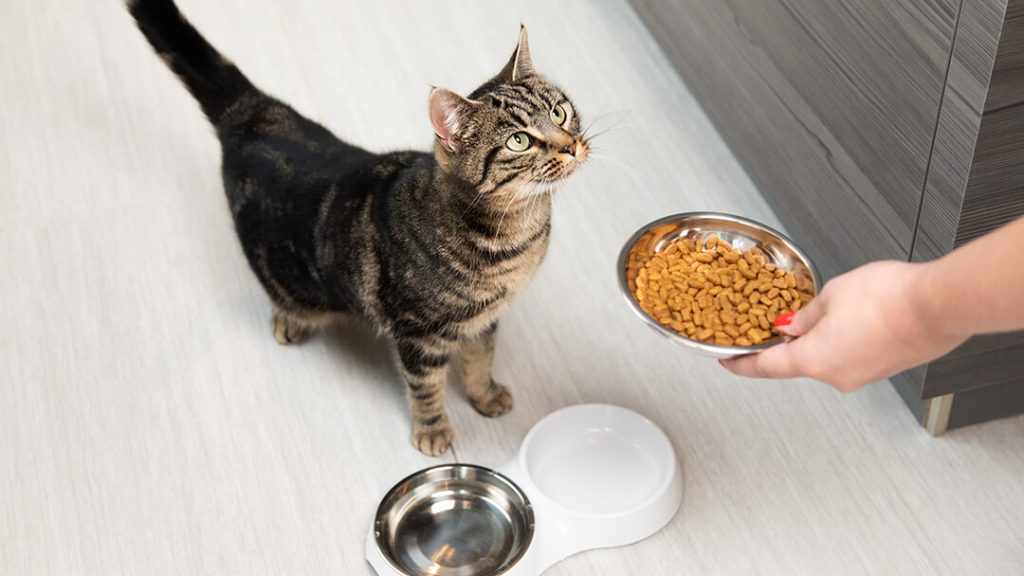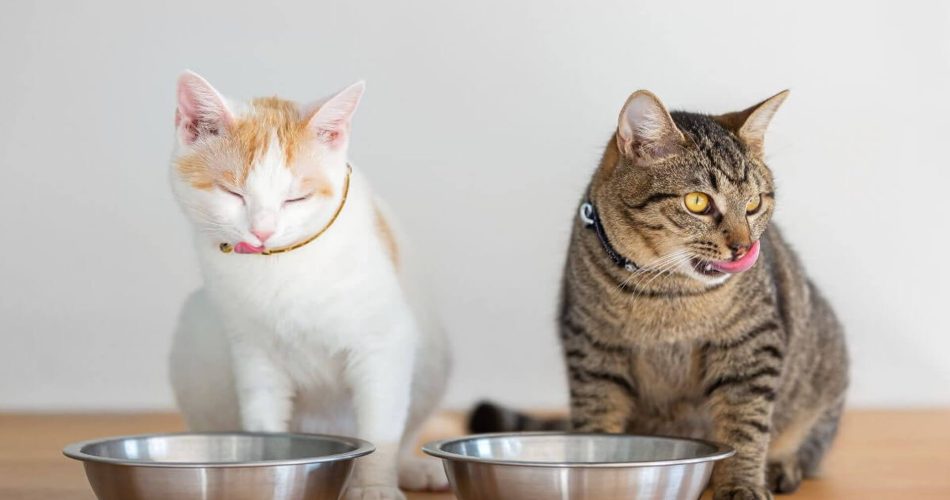When it comes to feeding your cat, one of the most common debates is whether wet or dry food is better. Both types have their pros and cons, and the choice often depends on your cat’s specific needs, preferences, and overall health. Understanding the differences between wet and dry cat food can help you make an informed decision that best supports your feline friend’s well-being.
What Is Wet Cat Food?
Wet cat food is typically packaged in cans or pouches and contains a high moisture content, usually around 70-80%. It is made with fresh or cooked ingredients and often resembles meat stews or pâtés. Wet food is available in a variety of flavors and textures, making it appealing to many cats, especially those who are picky eaters.

What Is Dry Cat Food?
Dry cat food, also known as kibble, is low in moisture, with a water content of around 10%. It is processed into small, crunchy pieces and is usually sold in large bags. Dry food is convenient to store, easy to measure for portion control, and has a longer shelf life once opened compared to wet food.
Benefits of Wet Cat Food
One of the primary advantages of wet cat food is its high moisture content. Cats are natural carnivores and often have a low thirst drive, which can make it difficult for them to drink enough water. Wet food helps keep your cat hydrated, reducing the risk of urinary tract issues and kidney problems.
Wet cat food is also more palatable and aromatic, which can be beneficial for picky eaters or cats with a reduced appetite. Its soft texture makes it easier to chew and digest, making it an ideal choice for senior cats or those with dental issues. Additionally, wet food is often closer to a cat’s natural diet, as it mimics the texture and moisture content of prey animals in the wild.
Benefits of Dry Cat Food
Dry cat food is highly convenient for both cats and their owners. It is easy to store, does not spoil quickly, and can be left out in a bowl throughout the day for cats who like to graze. Dry food is also cost-effective and typically more affordable than wet food, making it a practical choice for households with multiple cats.
The crunchy texture of dry food can help reduce tartar buildup and promote better dental health in some cats. Many brands also offer kibble that is specially formulated to support oral hygiene. Dry food is also easier to measure and portion, allowing owners to manage their cat’s calorie intake more effectively, which can be important for weight management.
Comparing Nutritional Value
Both wet and dry cat food can provide complete and balanced nutrition, as long as you choose high-quality brands that meet your cat’s specific dietary requirements. Wet food generally contains fewer carbohydrates and more protein, which aligns better with a cat’s natural dietary needs. On the other hand, dry food often contains more carbohydrates and may include fillers, so it’s essential to read the ingredient list carefully.
Potential Drawbacks of Wet Food
Despite its benefits, wet cat food does have some drawbacks. It is more expensive than dry food, and the individual cans or pouches can add up over time. Wet food also spoils quickly once opened, meaning any leftovers must be refrigerated and used within a day or two. Additionally, some cats may overeat wet food because of its rich taste, leading to potential weight gain if portions are not carefully controlled.

Potential Drawbacks of Dry Food
Dry cat food has a lower moisture content, which can be a concern for cats prone to dehydration or urinary tract issues. It is also less aromatic and flavorful compared to wet food, so some cats may find it less appealing. Additionally, while dry food may help reduce tartar, it is not a substitute for proper dental care, such as regular brushing or professional cleanings.
Choosing the Right Option for Your Cat
The decision between wet and dry cat food ultimately depends on your cat’s individual needs, preferences, and health conditions. For example, cats with urinary or kidney issues may benefit from the high moisture content in wet food, while those prone to dental problems might do better with dry kibble. Some cats thrive on a combination of both, allowing them to enjoy the benefits of each type of food.
It’s also important to consider your lifestyle and budget. Wet food may require more effort in terms of storage and feeding, while dry food offers convenience and affordability. No matter which type of food you choose, always ensure that it meets the nutritional standards set by organizations like the Association of American Feed Control Officials (AAFCO).
Combining Wet and Dry Food
Many cat owners opt for a mixed feeding approach, offering wet food for one meal and dry food for another. This strategy allows cats to enjoy the benefits of both types of food, such as the hydration from wet food and the dental benefits of dry kibble. A mixed diet can also help keep mealtime interesting for your cat, reducing the likelihood of boredom or fussiness.
Consulting Your Veterinarian
If you’re unsure about which type of food is best for your cat, consult your veterinarian. They can provide personalized recommendations based on your cat’s age, weight, activity level, and any underlying health concerns. Regular check-ups are also essential for monitoring your cat’s health and ensuring their diet is meeting their nutritional needs.
Conclusion
Both wet and dry cat food have their unique advantages and drawbacks, and the best choice depends on your cat’s individual needs and preferences. Wet food is ideal for hydration and palatability, while dry food offers convenience and dental benefits. Ultimately, providing a balanced, high-quality diet tailored to your cat’s lifestyle and health requirements is the key to ensuring a happy and healthy feline companion. Whether you choose wet food, dry food, or a combination of both, always prioritize your cat’s overall well-being and consult with your veterinarian for guidance.
